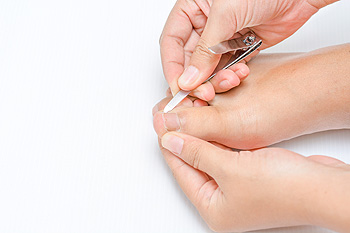 For persistent or severe ingrown toenails that do not respond to conservative treatment, surgical options offer alternative solutions. One common procedure is a partial nail avulsion. In this procedure, a podiatrist, or foot doctor, removes the part of the nail that is digging into the skin. They may apply a chemical called phenol to the nail bed to prevent that portion of the nail from growing back, reducing the chance of recurrence. In recurrent cases, a total nail avulsion might be necessary, which involves the removal of the whole nail. These procedures are typically performed under local anesthesia in a podiatrist's office, allowing for quick recovery time and minimal disruption to daily activities. Surgical intervention not only resolves the pain and infection associated with an ingrown toenail but also helps prevent future issues, along with proper nail care and guidance from a podiatrist. If you are struggling with persistent ingrown toenails, it is suggested that you make an appointment with a podiatrist.
For persistent or severe ingrown toenails that do not respond to conservative treatment, surgical options offer alternative solutions. One common procedure is a partial nail avulsion. In this procedure, a podiatrist, or foot doctor, removes the part of the nail that is digging into the skin. They may apply a chemical called phenol to the nail bed to prevent that portion of the nail from growing back, reducing the chance of recurrence. In recurrent cases, a total nail avulsion might be necessary, which involves the removal of the whole nail. These procedures are typically performed under local anesthesia in a podiatrist's office, allowing for quick recovery time and minimal disruption to daily activities. Surgical intervention not only resolves the pain and infection associated with an ingrown toenail but also helps prevent future issues, along with proper nail care and guidance from a podiatrist. If you are struggling with persistent ingrown toenails, it is suggested that you make an appointment with a podiatrist.
Ingrown toenails may initially present themselves as a minor discomfort, but they may progress into an infection in the skin without proper treatment. For more information about ingrown toenails, contact Patrice Antero, DPM of Tuscany Podiatry. Our doctor can provide the care you need to keep you pain-free and on your feet.
Ingrown Toenails
Ingrown toenails are caused when the corner or side of a toenail grows into the soft flesh surrounding it. They often result in redness, swelling, pain, and in some cases, infection. This condition typically affects the big toe and may recur if it is not treated properly.
Causes
- Improper toenail trimming
- Genetics
- Improper shoe fitting
- Injury from pedicures or nail picking
- Abnormal gait
- Poor hygiene
You are more likely to develop an ingrown toenail if you are obese, have diabetes, arthritis, or have any fungal infection in your nails. Additionally, people who have foot or toe deformities are at a higher risk of developing an ingrown toenail.
Symptoms
Some symptoms of ingrown toenails are redness, swelling, and pain. In rare cases, there may be a yellowish drainage coming from the nail.
Treatment
Ignoring an ingrown toenail can have serious complications. Infections of the nail border can progress to a deeper soft-tissue infection, which can then turn into a bone infection. You should always speak with your podiatrist if you suspect you have an ingrown toenail, especially if you have diabetes or poor circulation.
If you have any questions, please feel free to contact our office located in Tuscaloosa, AL . We offer the newest diagnostic and treatment technologies for all your foot care needs.



